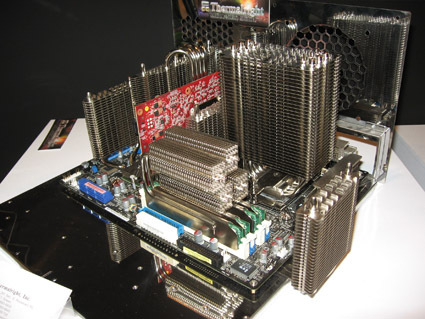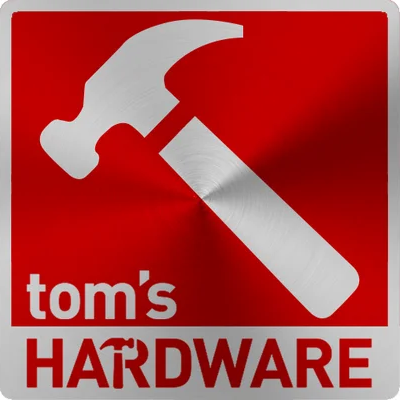Computex 2007 Summary
Pimp My Cooler
In the motherboard space we've seen many new products that are all based on the upcoming chipsets AMD RD790 and Intel X38. Since the chipsets offer vast overclocking options and lots of integrated features, there is little left for the motherboard makers to innovate. Hence, they have to optimize and customize, which results in a colorful plethora of motherboards, carrying complex heat-pipe structures. In the end, though, all of this hardly makes a difference, as our motherboard guy Thomas Soderstrom concluded in our recent P35 motherboard roundup.
The Supercomputing Hype
A year ago, physics acceleration was a big buzzword, and ATI showed its implementation of the Havok FX engine. Today, only Ageia's PhysX card is available, software support can be found only sparsely, and coverage in the worldwide media has run dry. Supercomputing wasn't a big topic at Computex 2007, but a first attempt surfaced at the Tyan booth.
After stepping from graphics acceleration to possible physics acceleration by GPUs, AMD/ATI and Nvidia have realized that it makes sense to take another step, and turn their hardware into general purpose processors, referred to as General Purpose Graphics Processing Units (GPGPUs). Since the workloads of shaders mainly consist of floating point calculations, and current hardware has reached a level at which it can crunch numbers brute-force in parallel, it makes a lot of sense to work towards consumer-style number crunchers. In addition, most users have a discrete graphics solution (and still will in the future), and Dual/Quad SLI or Crossfire/Quadfire setups could open new markets outside of the gaming and graphics world for AMD/ATI and Nvidia.
AMD/ATI representative Lars Weinand said that the firm is working with software companies to get commitments. Think of a WinZIP application that could run a compression task on a GPGPU in a fraction of the time it takes on a multi-core CPU. Or real-time encryption/decryption of all hard drive content through the GPGPU. Or XML acceleration for servers through a GPGPU... The possibilities are endless, as floating-point calculations are predominant and CPUs are good at deep calculation with branch prediction and such, but not necessarily at brute workloads.
Intel is working on its Larrabee project, and Nvidia is expected to be close to revealing a product to the public. The Supercomputing Conference on June 26 in Dresden, Germany, seems to be a good opportunity for an announcement, according to our news partner TG Daily.
Bye Computex, See You In 2008!
We already mentioned in our earlier coverage that Computex will be relocated next year, but in fact it will only be partially moved. Some of the exhibition will be at a new location, while the rest will remain where it currently is. Expect a slightly larger Computex 2008, and more traffic, but also plan to be spending considerably more time in a taxi or shuttle bus.
Get Tom's Hardware's best news and in-depth reviews, straight to your inbox.
Tom's Hardware is the leading destination for hardcore computer enthusiasts. We cover everything from processors to 3D printers, single-board computers, SSDs and high-end gaming rigs, empowering readers to make the most of the tech they love, keep up on the latest developments and buy the right gear. Our staff has more than 100 years of combined experience covering news, solving tech problems and reviewing components and systems.


